


When a customer’s shipment is delayed, the first place they look isn’t their phone — it’s your website. A well-designed logistics site can answer questions before they’re asked and solves problems without human intervention.
This guide covers the practical features and design approaches that create logistics websites that work as hard as your delivery teams do.
.avif)
Logistics companies need functional websites because their customers expect to find information and manage shipments online. The global logistics market reached $10.41 trillion in 2022 and is growing toward $14.08 trillion by 2029, with an 8.1% yearly growth rate. Companies without good websites miss out on this expanding market.

A clear, well-organized website helps new clients understand what shipping services you offer, where you deliver, and what makes your company different from competitors. For existing customers, a usable website saves time through interactive features like package tracking, online booking, and account management.
The logistics industry employs well over 120 million people worldwide, but even large teams struggle to handle all customer questions by phone or email. A good website answers common questions automatically and handles routine tasks without staff involvement.
A logistics website needs practical tools that help customers solve problems while reducing the workload for your staff. These five features transform a basic website into a valuable business tool for both you and your customers.
Tracking capabilities are the cornerstone of any logistics app or website. Customers constantly wonder where their shipments are, and providing this information online prevents countless phone calls to your customer service team.
A shipment tracking system updates location data regularly throughout the day and displays it in an easy-to-understand format. Customers should see the package’s current location on a map, past handling points, and an accurate delivery estimate.
Automatic notifications about status changes help keep customers informed without them needing to repeatedly check the website. When problems occur, like weather delays or customs holds, the tracking page should explain the issue and provide updated delivery expectations.
Shipping costs often influence business decisions, and customers appreciate getting price information without making a phone call. A price calculator asks for basic shipment details — origin, destination, weight, and dimensions — then provides accurate cost estimates for different service levels.
The key word here is “accurate”. The calculator should match the actual prices customers pay when they book.
Good calculators explain additional fees that might apply, like fuel surcharges, weekend delivery costs, or insurance. For business customers, the ability to save recent calculations or request quotes for multiple shipments at once adds significant convenience.
Regular customers need tools to manage their ongoing relationship with your company. A well-designed account section stores shipping addresses, shows past shipments, and provides instant access to billing records.
Customers should be able to download invoices, update payment methods, and adjust their contact preferences all in one place. Customizable dashboards showing upcoming pickups, recent deliveries, and account status give frequent shippers a quick overview each time they log in.
<div class="post_divider"></div>
⭐ Our experience
When our team got the Saidali project, we knew we needed to create more than just another pharmacy app. This medication delivery service needed to stand out, so we focused on creating a seamless experience — especially in how users manage their profiles and track their orders.
The profile section was all about making repeat purchases smoother. We designed it to securely store all the important stuff like credit card details, medical prescriptions, and even a list of medications users buy regularly. This way, they don’t have to enter the same information over and over each time they need something.
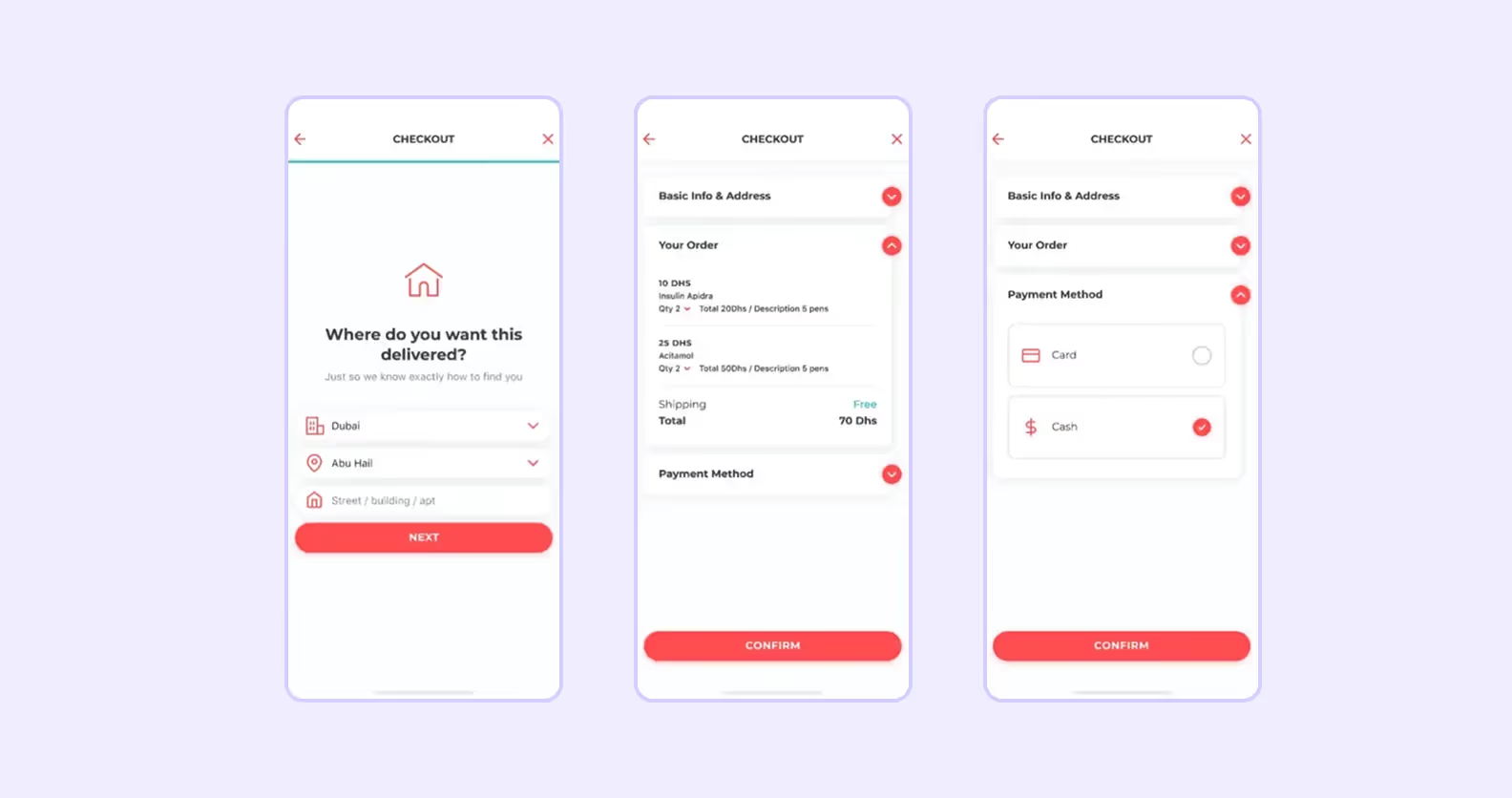
<div class="post_divider"></div>
Online booking saves time and reduces errors for both customers and staff. A good booking system walks users through the shipping process in logical steps, collecting all necessary information without overwhelming them.
The system should remember returning customers’ preferences and allow them to quickly book similar shipments without re-entering all details. Scheduling capabilities for pickups and deliveries let customers select convenient time windows without phone calls.
Business customers make better decisions when they understand their shipping patterns. Useful reporting tools show spending trends across time periods, service types, and destinations.
Performance metrics like on-time delivery percentages help customers evaluate service quality, while volume and weight analysis can identify opportunities for more efficient shipping.
For logistics companies, effective web design balances visual appeal with practical functionality. It helps customers manage their shipping needs without frustration.
Navigation should feel natural and require minimal thought. Logistics websites often contain interactive tools and information sections, so organizing them is crucial.
The main menu should clearly separate tracking functions from booking tools, support resources, and company information. Features like tracking and quote requests deserve prominent placement, often as buttons in the header that remain visible on every page.
Breadcrumb trails help users understand where they are within the site structure, while a persistent search function allows them to quickly find specific information. For complex logistics websites with many features, consider using mega-menus that organize options into visual categories.
Many logistics customers check shipment status or make bookings while away from their desks. Mobile responsiveness ensures the website works well on smartphones and tablets, not just desktop computers.
This means using larger touch targets for buttons, simplifying forms for smaller screens, and ensuring text remains readable without zooming.
Loading speed is particularly important for mobile users, who may have slower connections. Compressing images, minimizing code, and using performance optimization techniques helps prevent frustrated customers from abandoning your site.
<div class="post_divider"></div>
⭐ Our experience
We redesigned a logistics app called Cargo that makes delivery services run smoother. It’s all about connecting drivers with warehouses and giving everyone real-time updates to make sure packages get where they need to go.
When designing it, we really focused on the user journey. We kept the login simple but made sure our client’s branding was front and center. For drivers rushing around all day, we designed the dashboard with minimal buttons to prevent mistakes.
To speed things up, we added barcode scanning for parcels (with manual entry as a backup for damaged barcodes). During deliveries, we made the map the main focus but included options to pause or mark deliveries as undelivered. We also designed a straightforward delivery form for capturing photos, signatures, and notes.
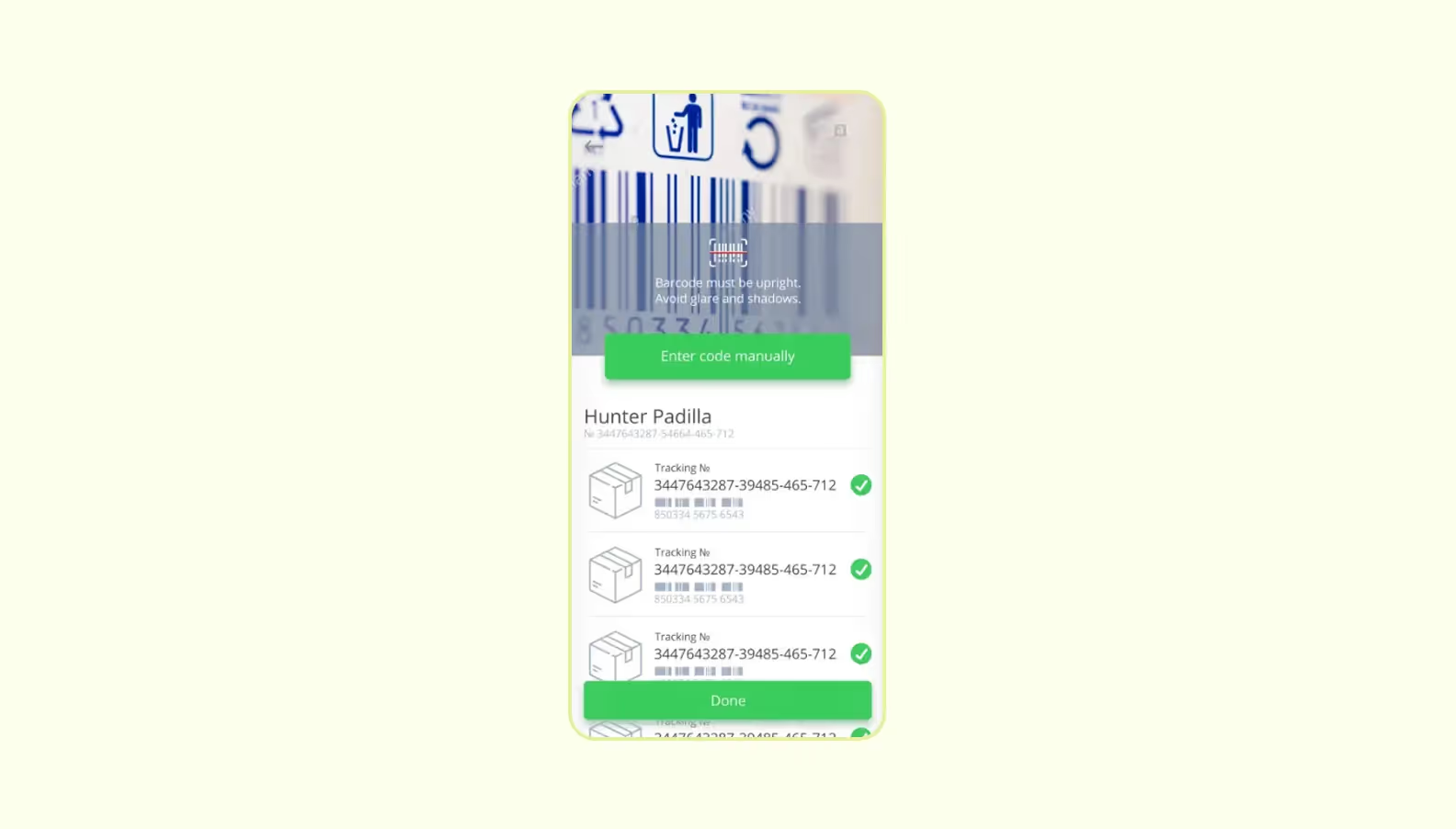
<div class="post_divider"></div>
When customers track shipments, they want information presented visually, not just as text. Maps showing the package location and progress bars indicating how far along the delivery process has advanced help users understand the status at a glance.
Color coding provides immediate status indication — green for on-time shipments, yellow for potential delays, and red for problems requiring attention. These visual elements reduce confusion and support calls by making complex operations understandable.
Long, complicated forms frustrate users and lead to errors. Design booking and quote request forms with minimal required fields, breaking longer processes into logical steps rather than overwhelming single pages.
Auto-complete functionality for addresses and saved information for returning customers significantly reduces data entry time. Field validation should happen in real-time rather than after submission. This prevents the frustration of completing an entire form only to discover errors afterward.
Accessible websites work better for everyone, not just users with disabilities. Ensure text has sufficient contrast against backgrounds, use descriptive alt text for images, and structure content with proper heading hierarchies.
These practices help users with visual impairments, motor limitations, or other accessibility needs, while also improving usability for all customers. They also help your website meet legal accessibility requirements that apply in many countries.
<div class="post_divider"></div>
⭐ Our experience
We built a mobile post office app for PonyExpress to help them expand their network of parcel pickup and dropoff points. The challenge was that most of the dispatchers who’d be using our app were older people, and the system needed to work on Evotor terminals.
The designers had this specific audience in mind — making buttons larger and creating super clear, eye-catching alerts that would be hard to miss. For example, if a barcode scan fails, the dispatcher gets a bright red alert to catch their attention.
We put a lot of thought into the iconography, even conducting research with the target audience to make sure the icons we designed were intuitive and made sense to them.

<div class="post_divider"></div>
Visual consistency builds trust and reinforces your brand identity. Maintain the same color scheme, typography, button styles, and overall look across all pages. This consistency extends to language as well.
Use the same terminology throughout the site, rather than referring to the same concept in different ways. When customers move between your website, tracking emails, and mobile notifications, the experience should feel seamless and recognizably from your company.
When your website is easy to navigate and works well on any device, visitors stay longer and find what they need faster. You can reinforce this positive effect by applying these search engine optimization techniques.
Effective SEO starts with understanding what terms your potential customers use when searching. For logistics industry websites, this means researching industry-specific keywords that match your services. Focus on three main types:
You can use tools like Google Keyword Planner to identify which terms have reasonable search volume but manageable competition. The best keywords balance search popularity with your ability to rank for them. Longer, more specific phrases often convert better because they match exactly what customers need.
For logistics companies serving specific regions, local SEO helps you appear in nearby searches. Start by creating and optimizing your Google Business Profile with accurate information about your location, hours, and services. Add photos of your facilities and vehicles to build credibility.
Ensure your company name, address, and phone number appear consistently across your website and all online directories. Even small differences can confuse search engines.
Create location-specific pages on your website for each area you serve, with content addressing the unique shipping needs of that region.
Encourage satisfied customers to leave reviews on Google and industry platforms. Positive reviews improve your search rankings and build trust with potential clients.
Regular, informative content establishes your expertise while improving search rankings. Create a blog section on your website where you publish articles about logistics topics that matter to your customers.
Answer common customer questions in detailed guides that showcase your knowledge. For example, “How to Prepare Items for International Shipping” or “Understanding Customs Documentation” can attract readers while demonstrating your expertise.
Case studies about successful shipments or logistics challenges you’ve solved show potential clients how you handle real-world situations. Each article should target specific keywords while providing information that positions your company as a trusted advisor in the logistics field.
These five companies stand out for their effective approach to website design to help users quickly find what they need.
FedEx’s website prioritizes user-centered design with a focus on making complex shipping processes simple. Their homepage features prominent tracking and shipping tools that users can access without scrolling. The clean layout uses the recognizable purple and orange brand colors against white space, creating a professional look without visual clutter.
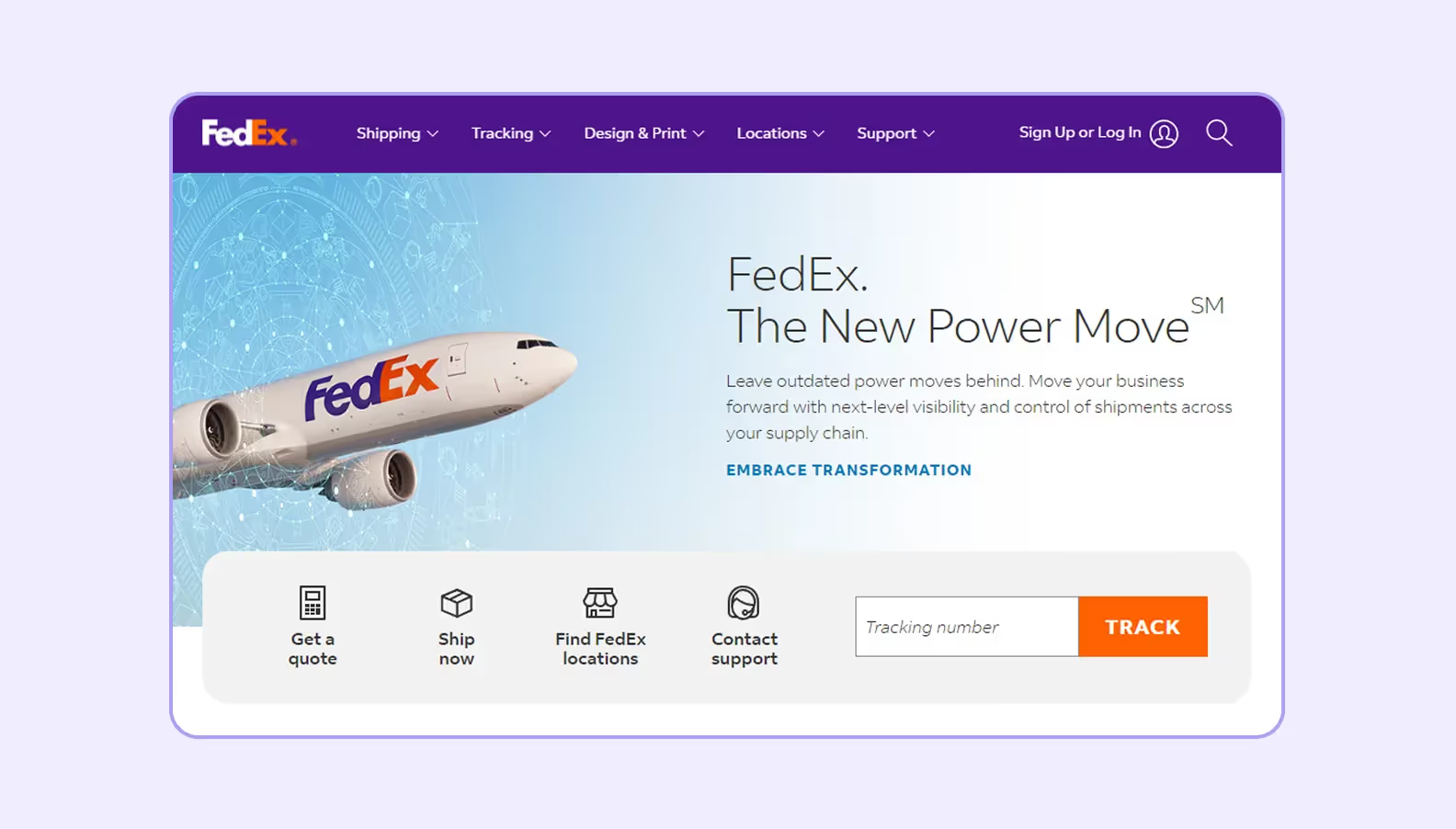
The UPS homepage features a prominent tracking box that accepts multiple reference numbers, making it the fastest way for customers to check shipment status. The site uses a clean brown and white color scheme that reinforces brand identity while remaining professional. The site also uses location detection to display relevant service information for the user’s area.
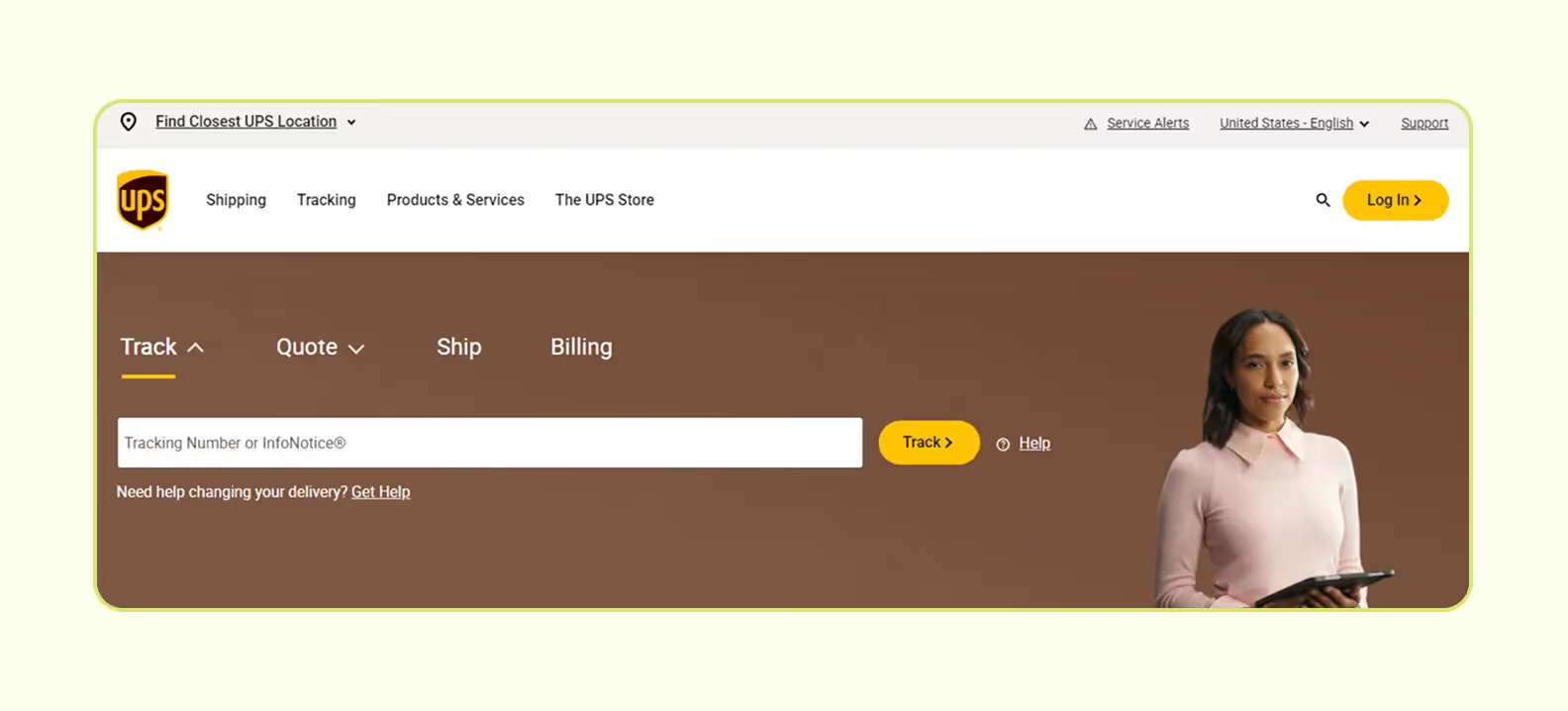
Maersk’s website stands out for its clear organization of complex information. Their design uses a clean blue and white color scheme with minimal distractions, helping users focus on the task at hand. Their booking system uses intelligent forms that adapt based on user input, showing only relevant fields and reducing confusion.
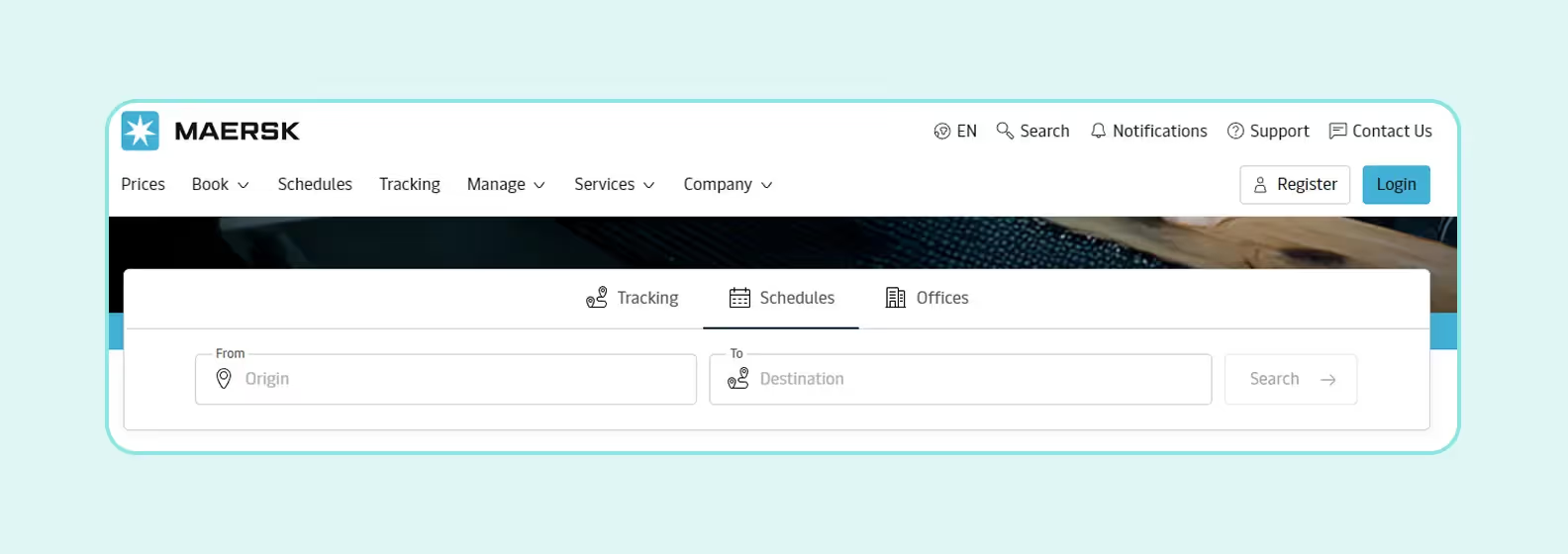
Traffic Tech shows how mid-sized logistics companies can create effective websites without the resources of industry giants. Their site uses a modern, clean design with plenty of white space and strategic use of color to highlight important elements. The resources section features useful materials that look into logistics trends.
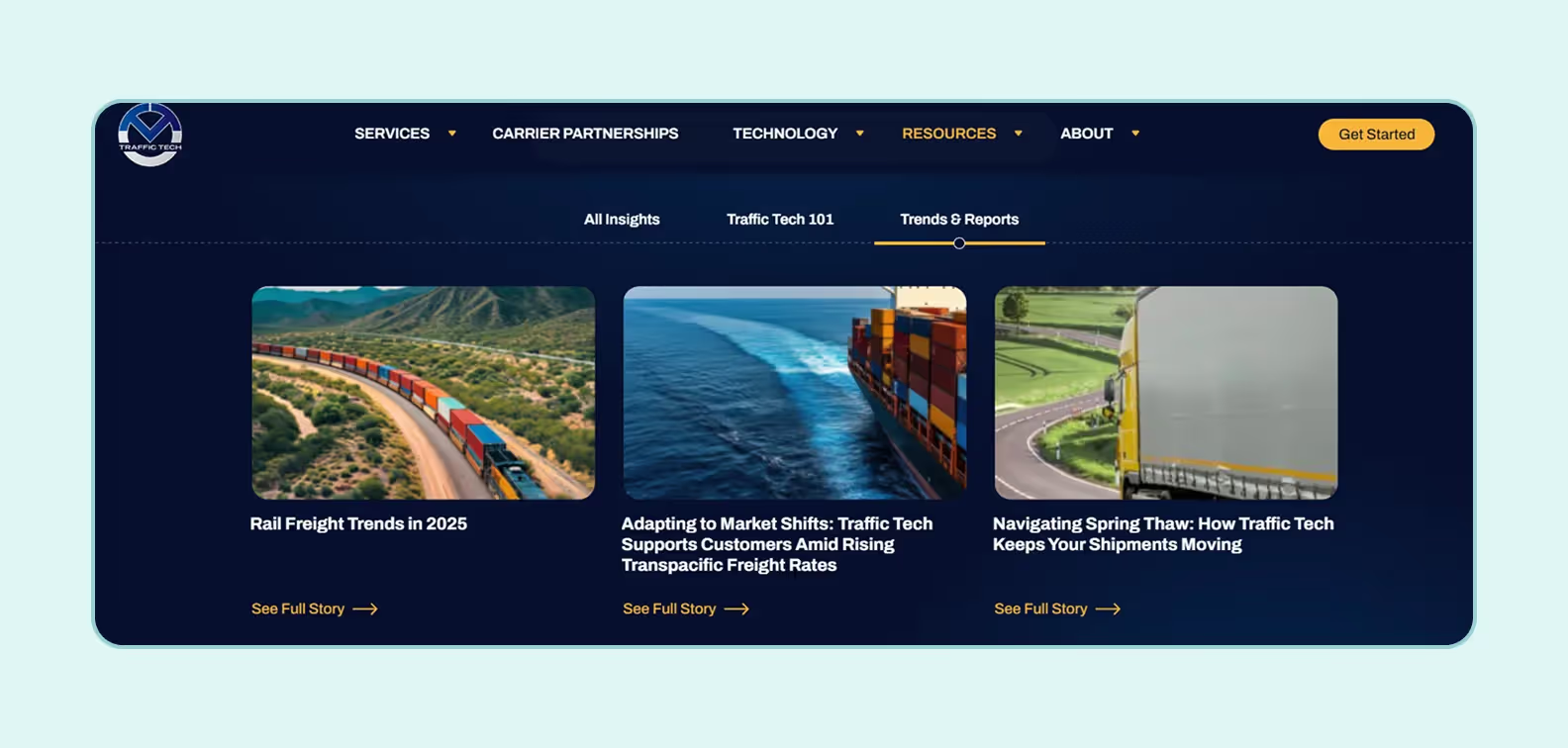
RXO’s website showcases modern design principles with a focus on visual storytelling. Their homepage uses bold typography and strategic animation to guide visitors through their service offerings without overwhelming them. The site’s navigation is particularly effective, using descriptive labels and logical grouping to help users find information quickly.
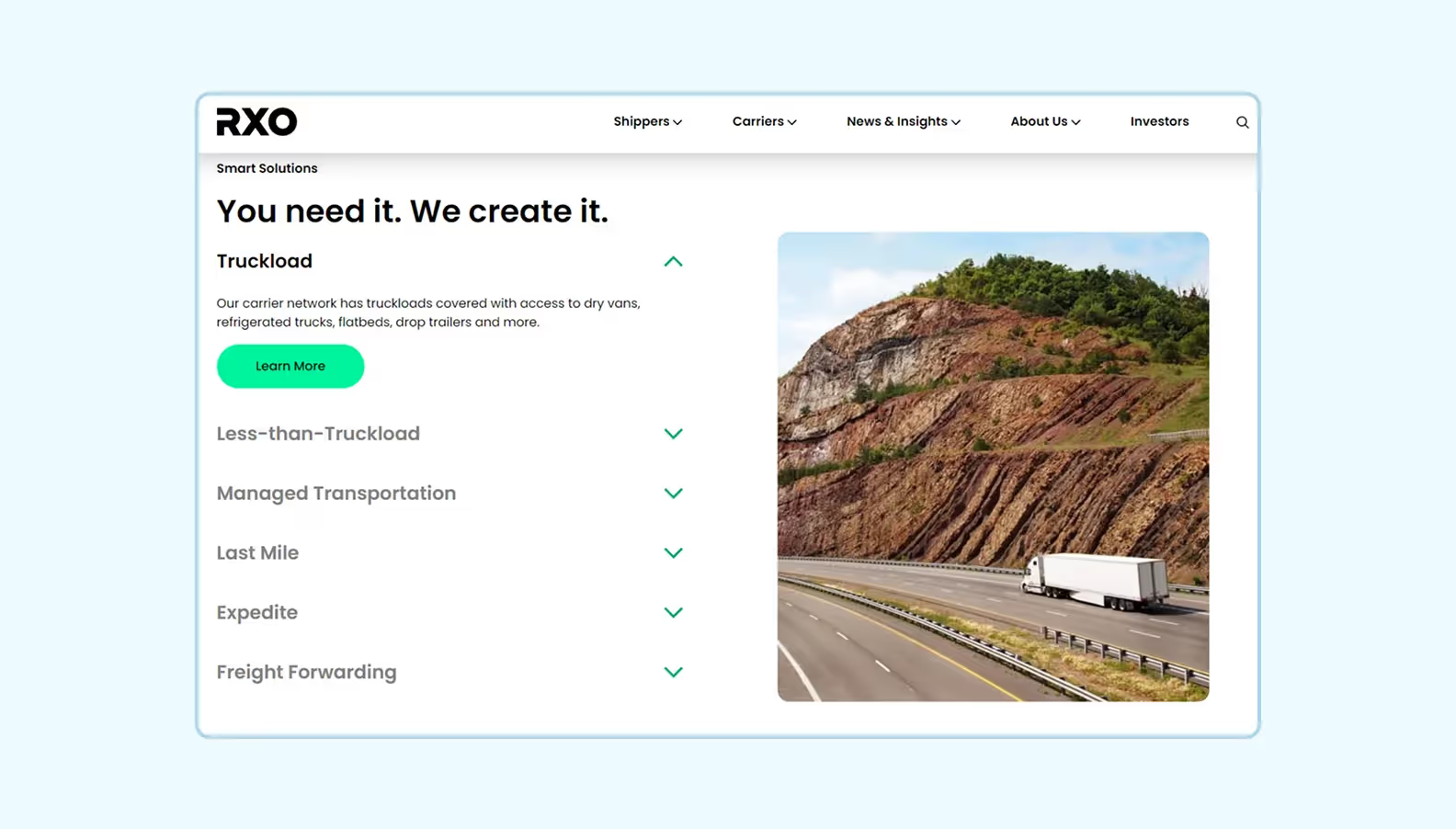
A well-designed logistics website combines features like tracking, pricing tools, and booking systems with a user-friendly experience. By following best practices for navigation, mobile optimization, and content strategy, your logistics company can create a website that serves customer needs while growing your business.
➡️ Ready to improve your online presence? <a class="blog-modal_opener">Fill in the form</a> to create a logistics website that works as hard as you do.